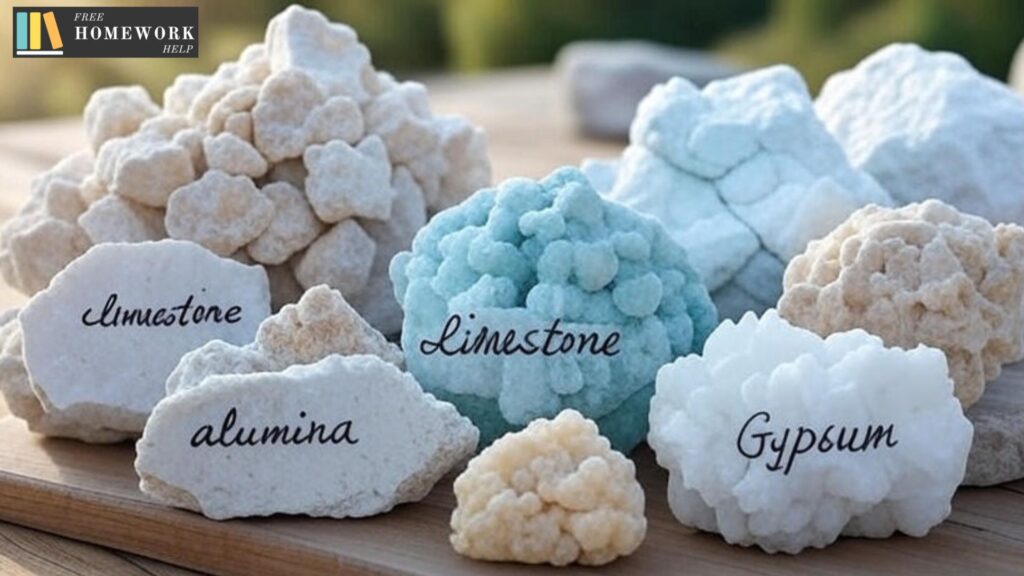NCERT Solutions Class 10 Geography Chapter 6 – Manufacturing Industries provide easy-to-understand answers to all textbook questions. These solutions explain the concepts clearly and simply, helping students understand better and score well in exams.
NCERT Solutions Class 10 Geography Chapter 6 Manufacturing Industries
Page No: 79
Multiple choice questions
(i) Which one of the following industries uses limestone as a raw material?
(a) Aluminium
(b) Cement
(c) Sugar
(d) Jute
Answer: (b) Cement
(ii) Which one of the following agencies markets steel for the public sector plants?
(a) HAIL
(b) SAIL
(c) TATA Steel
(d) MNCC
Answer: (b) SAIL
(iii) Which one of the following industries uses bauxite as a raw material?
(a) Aluminium
(b) Cement
(c) Jute
(d) Steel
Answer: (a) Aluminium
(iv) Which one of the following industries manufactures telephones, computers, etc?
(a) Steel
(b) Electronic
(c) Aluminium
(d) Information Technology
Answer: (b) Electronic
Answer the following briefly in not more than 30 words.
1. What is manufacturing?
Answer: Manufacturing is the process of producing goods in large amounts using raw materials. For example, wood is used to make paper, sugarcane to make sugar, iron ore for iron and steel, and bauxite for aluminium.
2. Name any three physical factors for the location of the industry.
Answer: Three physical factors for setting up an industry are:
→ Easy availability of raw materials
→ Good climate
→ Enough water and electricity supply
3. Name any three human factors for the location of an industry.
Answer: Three human factors for setting up an industry are:
→ Easy availability of workers
→ Access to services like banking and advice
→ A nearby market to sell products

4. What are the basic industries? Give an example.
Answer: Basic industries produce materials that other industries use to make goods.. For example, the iron and steel industry provides steel to make cars.
5. Name the important raw materials used in the manufacturing of cement.
Answer: The important raw materials used in the manufacturing of cement are:
limestone, silica, alumina and gypsum.

Write the answers to the following questions in 120 words.
1. How are integrated steel plants different from mini steel plants? What problems does the industry face? What recent developments have led to a rise in the production capacity?
Answer: Difference Between Integrated Steel Plants and Mini Steel Plants
| Integrated Steel Plants | Mini Steel Plants |
|---|---|
| These are Large-scale. | These are Small-scale. |
| All steps are done in one complex, from raw material to finished steel | Limited process – mostly melting and shaping |
| Blast furnaces are used. | Electric arc furnaces are used. |
| Examples: Iron ore, coking coal | Examples: Steel scrap and sponge iron |
| Various types of steel | Mild and alloy steel as per need |
| Included in the main process | Uses re-rollers with steel ingots |
Problems Faced by the Steel Industry:
- Coking coal is costly and not easily available.
- Workers’ productivity is low.
- Power supply is often not steady.
- Infrastructure is not well-developed.
Recent Improvements in the Steel Industry:
New technologies are now used to improve how steel is made.
Liberalisation has made doing business easier.
FDI (Foreign Direct Investment) and private companies have helped grow the industry.
2. How do industries pollute the environment?
Answer: Industries are responsible for four main types of pollution: air, water, land, and noise. The table below shows the types of pollution and their causes.
| Type of Pollution | Main Causes |
| Air Pollution | Harmful gases like sulphur dioxide and carbon monoxide released from factories. |
| Water Pollution | Factories release wastewater with chemicals and harmful substances into rivers. |
| Thermal Pollution | Hot water from industries and power plants flows into water bodies without cooling. |
| Nuclear Waste Pollution | Waste from nuclear plants can lead to cancer, birth defects, and miscarriages. |
| Land Pollution | Dumping of glass, chemicals, salts, and other waste makes the soil infertile. |
| Noise Pollution | Caused by machines, construction work, generators, drills, etc. |
3. Discuss the steps to be taken to minimise environmental degradation by industry.
Answer: Steps to Reduce Environmental Degradation by Industries:
Water Pollution:
- Treat industrial wastewater at the primary, secondary, and tertiary levels.
- Reuse and recycle water in industrial processes.
- Harvest rainwater to meet water needs.
- Regulate groundwater use through legal measures.
Air Pollution:
- Install filters like electrostatic precipitators, scrubbers, and fabric filters on factory chimneys.
- Use cleaner fuels like oil or gas instead of coal.
Noise Pollution:
- Fit machines and generators with silencers.
- Redesign equipment to produce less noise.
- Use earplugs and noise-reducing materials in noisy areas.
Activity
Give one word for each of the following about the industry. The number of letters in each word is hinted at in brackets.
(i) Used to drive machinery (5) P………………………
(ii) People who work in a factory (6) W……………………..
(iii) Where the product is sold (6) M……………………..
(iv) A person who sells goods (8) R………………………
(v) Thing produced (7) P………………………
(vi) To make or produce (11) M……………………..
(vii) Land, Water and Air degraded (9) P………………………
Answer:
(i) Power
(ii) Worker
(iii) Market
(iv) Retailer
(v) Product
(vi) Manufacture
(vii) Pollution
FAQ
What is the importance of the manufacturing sector in India?
The manufacturing sector helps in the economic growth of the country, reduces dependence on agriculture, creates jobs, and adds value to raw materials.
Why is the iron and steel industry called a basic industry?
It is called a basic industry because it provides raw materials like steel to other industries such as construction, automobiles, and machinery.
What are the major causes of industrial pollution?
The main causes are untreated industrial waste, smoke from factories, and noise from machines and generators.
Conclusion
Manufacturing industries play a vital role in the growth of India’s economy by creating jobs, reducing dependence on agriculture, and supporting other sectors. Understanding NCERT Solutions Class 10 Geography Chapter 6 helps students see how industries impact development and the environment. At freehomeworkhelp.in, we aim to make learning easy with simple, accurate NCERT solutions that help students score better and understand concepts clearly.
